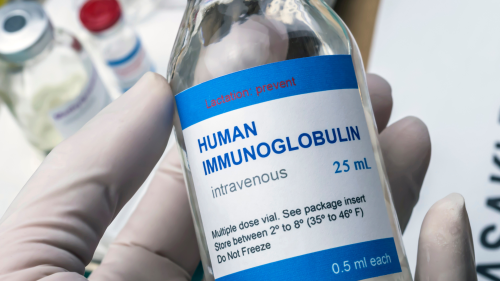
-
Understanding primary immunodeficiency (PI)

Understanding PI
The more you understand about primary immunodeficiency (PI), the better you can live with the disease or support others in your life with PI. Learn more about PI, including the various diagnoses and treatment options.
-
Living with PI
-
Addressing mental health
-
Explaining your diagnosis
- General care
- Get support
- For parents and guardians
-
Managing workplace issues
- Navigating insurance
-
Traveling safely

Living with PI
Living with primary immunodeficiency (PI) can be challenging, but you’re not alone—many people with PI lead full and active lives. With the right support and resources, you can, too.
-
Addressing mental health
-
Get involved

Get involved
Be a hero for those with PI. Change lives by promoting primary immunodeficiency (PI) awareness and taking action in your community through advocacy, donating, volunteering, or fundraising.
-
Advancing research and clinical care
-
Grants
-
IDF surveys
-
Participating in clinical trials
-
Diagnosing PI
-
Consulting immunologist
-
Clinician education

Advancing research and clinical care
Whether you’re a clinician, researcher, or an individual with primary immunodeficiency (PI), IDF has resources to help you advance the field. Get details on surveys, grants, and clinical trials.
-
Grants
While many hurdles exist to achieve a vaccine for COVID-19, a temporary, short-term solution is on the horizon – antiviral treatments. Of those, two give Dr. Michael Blaese hope.
The first is convalescent plasma taken from recovered COVID-19 patients. The plasma could be an important prophylactic for those with PI.
The second is monoclonal antibodies. To make human monoclonal antibodies, researchers take particularly potent antibodies from people who have had COVID-19 and then grow them up in a clone to produce large quantities of the protective antibodies.
These prophylactic antibodies can be applied to a large patient population and show great promise in protecting those on the frontlines such as first responders and workers in health, medical, and school settings.
“The list goes on and on where this sort of protective antibody could be really terrific, and I encourage our plasma protein people to keep working on this idea because it’s very important for us,” said Dr. Blaese, a member of the IDF Physician Advisory Committee.
Dr. Blaese provided the PI community with a pandemic update during an IDF Forum entitled, “COVID-19: An Evolving Situation,” presented on October 13. During the Forum, he discussed a wide variety of topics from symptoms of the disease and its course to the types of vaccines being developed and their clinical trials progress.
The most common symptoms of COVID are:
- Fever, chills, sweating, cough, shortness of breath
- Muscle or body aches, sore throat, fatigue
- Congestion or runny nose, diarrhea, vomiting
- New loss of taste or smell, headache, confusion
- Pneumonia, kidney failure, neurological symptoms in more serious cases
Dr. Blaese explained that several factors in the course of COVID-19 make the disease difficult to control and treat.
Controlling COVID-19 is challenging because it can be spread through asymptomatic carriers, unlike the flu. When a person has the flu, for example, he has to be sick with symptoms before spreading it.
“That’s not true with COVID and that’s why it’s such a difficult disorder to trace and take care of because people who don’t have symptoms, you don’t think of them as being ill, and yet they’re spreading this bad disease,” said Dr. Blaese.
COVID-19 can also be difficult to treat. Some people experience serious health problems such as blood clotting disorders leading to stroke or heart attack; brain inflammation; and multi-system organ failure, in which the lungs, kidney, liver, and heart shut down.
“The thing that the immune system is responding to isn’t going away, and they start making more and more molecules, signals saying get going guys, get rid of this thing, and eventually they’re making so many cytokines that the body turns on itself, and now the immune system can attack all the other systems, and it can cause a major problem that can result in death in a number of individuals,” explained Dr. Blaese.
COVID is also problematic, even post-disease.
“What we’re finding is that the recovery period can be prolonged, it can be characterized by severe fatigue, by heart disease, by kidney failure, and again neurological damage, so these patients 7 or 8 months out at the most from the beginning of this pandemic, we really have no idea how long this is going to go on and whether these people will ultimately recover or will this be something they’re going to have to live with for the rest of their lives,” said Dr. Blaese.
If you think you’ve been exposed, get tested. While most people with COVID-19 experience mild illness, it’s still important to keep a log of your symptoms and take your temperature at least daily. Make sure to rest and stay hydrated and remain isolated from others in the household.
Seek medical attention if you have trouble breathing, pain, or pressure in the chest, confusion, inability to wake or stay awake, bluish lips or face, or if you are in a high-risk group.
So what is the risk for severe illness from COVID-19 in a person with PI? A collaborative study organized by the International Union of Immunological Societies (IUIS) found that those with antibody deficiency had an outcome similar to those without a deficiency.
“There was enough power to this particular study that they’ve been able to say that they don’t think antibody deficiency is at any higher risk for serious consequences than the general population, so in one sense, that’s quite a comforting sign,” said Dr. Blaese.
“They’ve gone to the point of saying, you know if your kid has got X-linked agammaglobulinemia or common variable immune deficiency and school is opening that your child should probably be sent to school because the incidence of infection and serious infection in school-age kids is pretty low and you and you can go there because you’re not going to get sicker than the average person in your age group.”
As scientists race to produce a safe and effective coronavirus vaccine by next year, more than 130 vaccines are in progress. Of those, 91 are preclinical vaccines in which animals are given a vaccine to see if they produce an immune response, and 43 vaccines are in clinical trials on humans.
“Even if we have a vaccine by next year, we’re still talking 12 to 15 months to develop a vaccine, which is sort of unheard of,” said Blaese.
According to the New York Times Coronavirus Outbreak page vaccine tracker, as of Oct. 28 the vaccines are in the following phases of clinical trials:
- Phase 1 – 34 vaccines are being tested for safety and dosage
- Phase 2 – 14 vaccines are in expanded safety trials
- Phase 3 – 11 vaccines are in large scale efficacy tests
- Limited – 6 vaccines are approved for early or limited use
- Approved – 0 vaccines are approved for full use
Dr. Blaese pointed out that those vaccines in limited approval are in China and Russia, countries that have decided to bypass clinical phase 3, which has caused an uproar in the medical community.
The idea behind most of the vaccines being developed is to make an antibody that will neutralize the virus, and the following are five types of vaccines in development:
Genetic vaccines – These vaccines deliver a coronavirus directly into our genes to provoke an immune response. There are two leading vaccines in phase 3 that utilize messenger RNA, but they must be stored at -320 degrees, so transport and storage will be challenging. One of those trials has enrolled 30,000 patients. There are also three DNA vaccines that are in phase 2.
Viral vector vaccines – These are vaccines in which researchers take another virus that’s been engineered so it doesn’t cause disease and stick in genetic information from the coronavirus so that you can infect the cells but not cause disease. It’s similar to gene therapy. One of these is enrolling 60,000 patients in their phase 3 trials.
Protein-based vaccines – These are vaccines that contain coronavirus proteins but no genetic material, similar to tetanus and diphtheria vaccines. There is one in phase 3, several in phases 1 or 2.
Killed or weakened virus vaccines – These are weakened vaccines that can’t cause disease but can generate an immune response, similar to the polio vaccine.
Repurposed vaccines – These vaccines utilize a vaccine for something else and try it with COVID. The tuberculosis vaccine is getting the most activity.
Even as vaccines move forward, challenges remain, including:
- Will the public trust and take it, considering the highly politicized environment?
- How do you safely test it in high-risk populations?
- Will it be safe, and will there be any long term effects?
- How long will it protect us, and how many shots will be required?
- What type of shipping and storage is required?
- Can enough be made, and will herd immunity be effective?
Until there is a protective vaccine, Dr. Blaese urged the community to do the following:
- Wear your mask
- Practice social distancing
- Wash your hands often
- Avoid indoor groups
- Be prepared for COVID-19 and flu (makes sure household members get flu shot)
- Self-quarantine if you can
- Check back with IDF for the latest news
Click here to watch the entire presentation.
Sign up for updates from IDF
Receive news and helpful resources to your cell phone or inbox. You can change or cancel your subscription at any time.





The Immune Deficiency Foundation improves the diagnosis, treatment, and quality of life for every person affected by primary immunodeficiency.
We foster a community that is connected, engaged, and empowered through advocacy, education, and research.
Combined Charity Campaign | CFC# 66309




